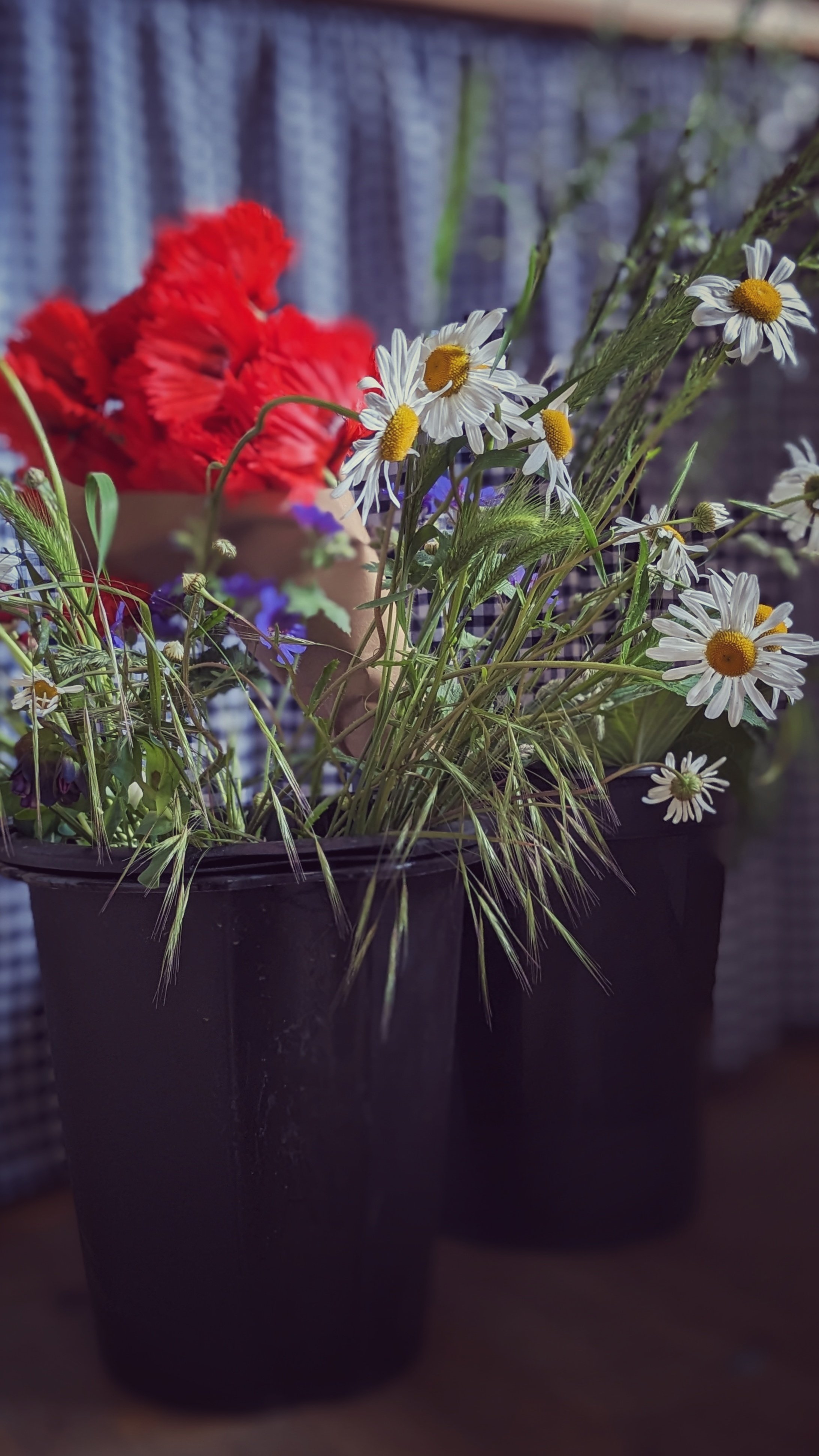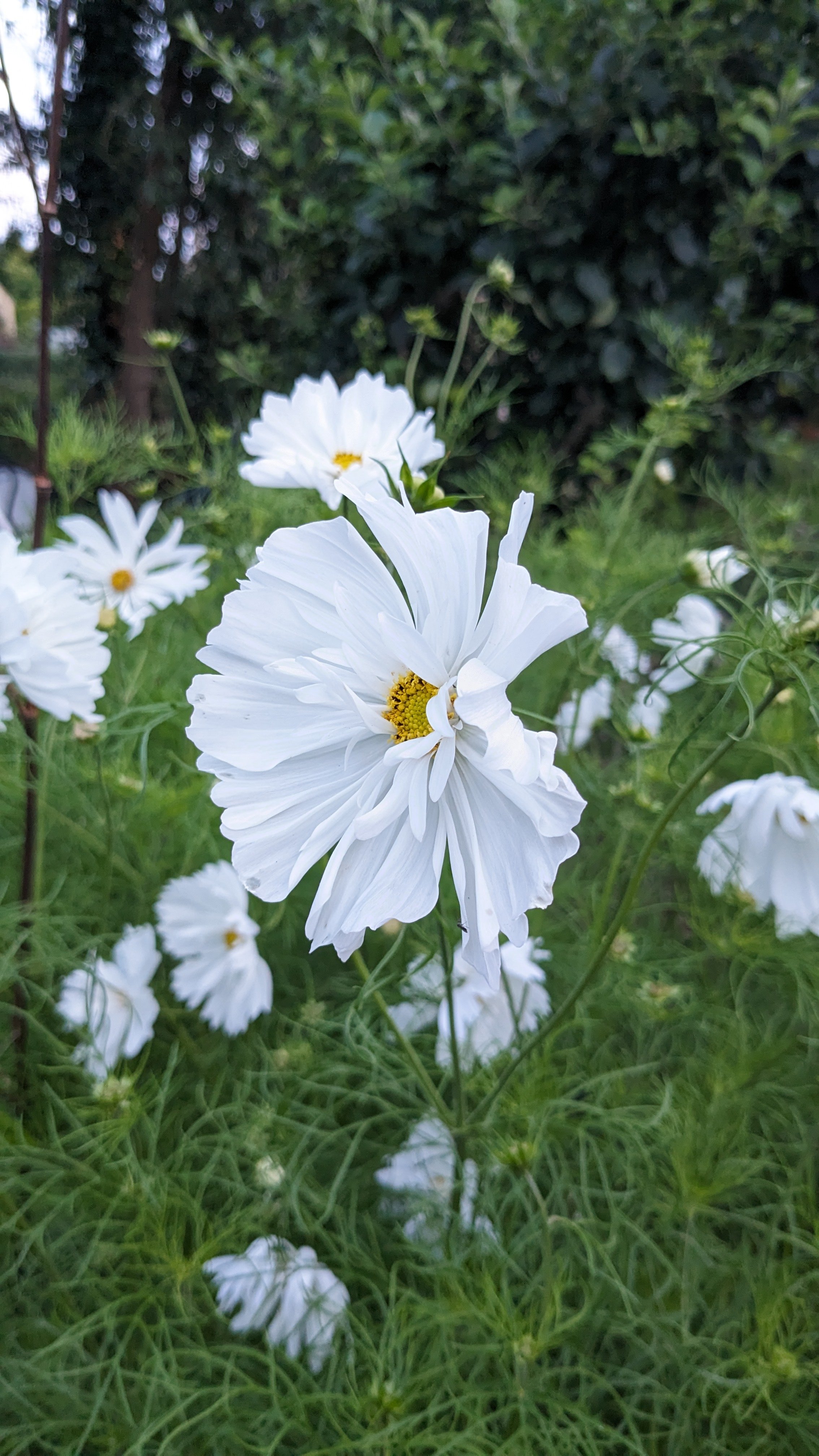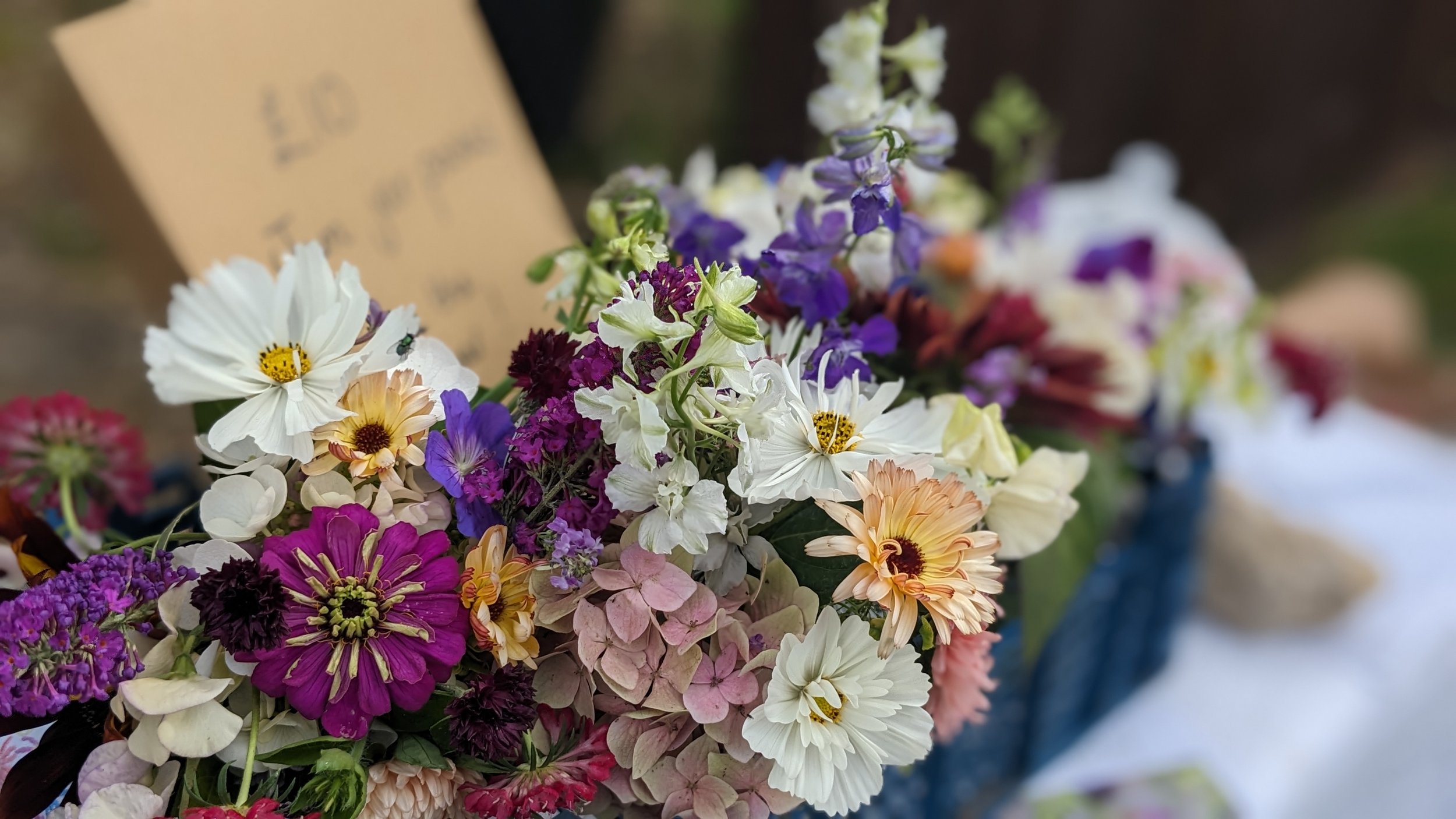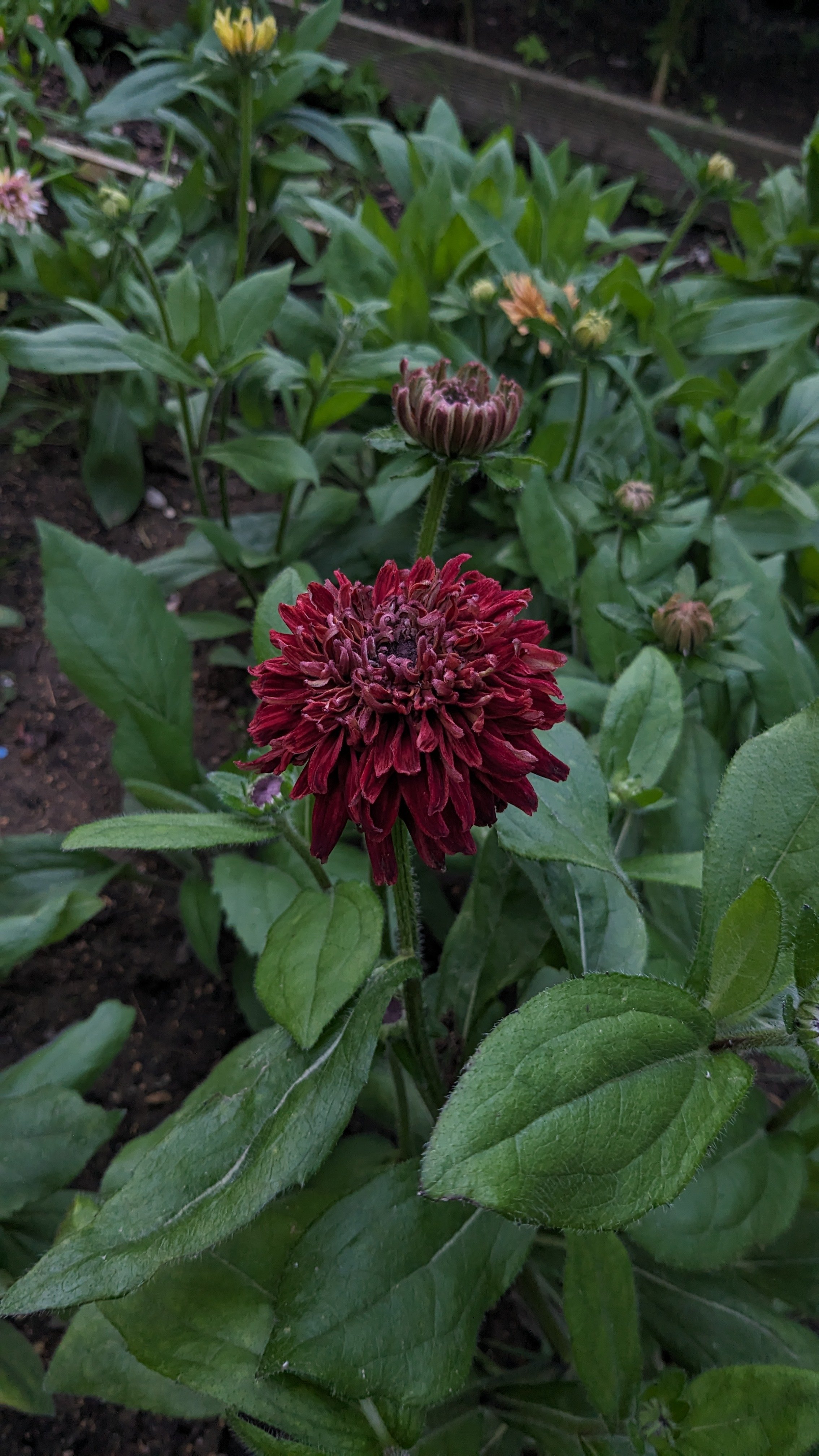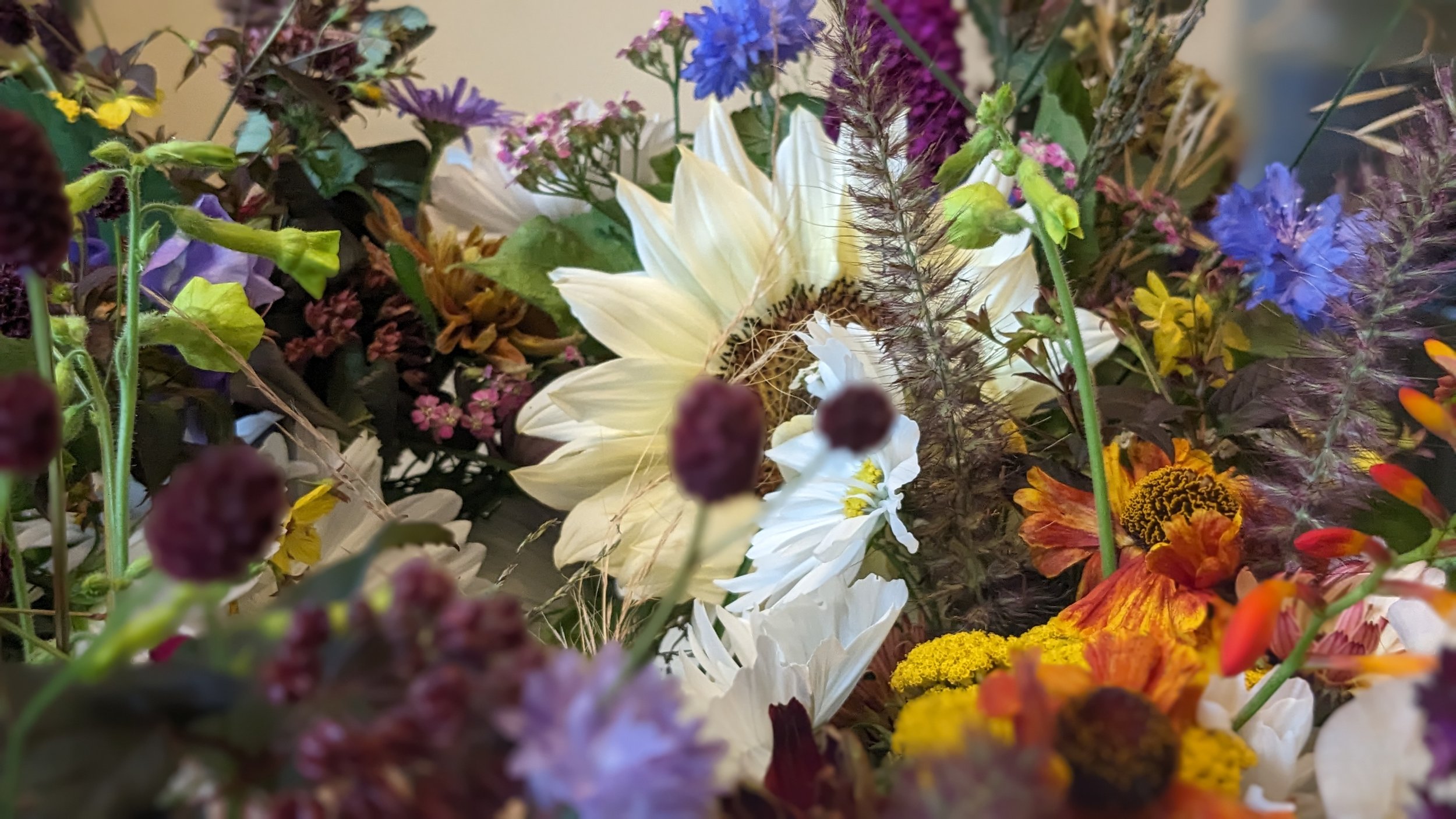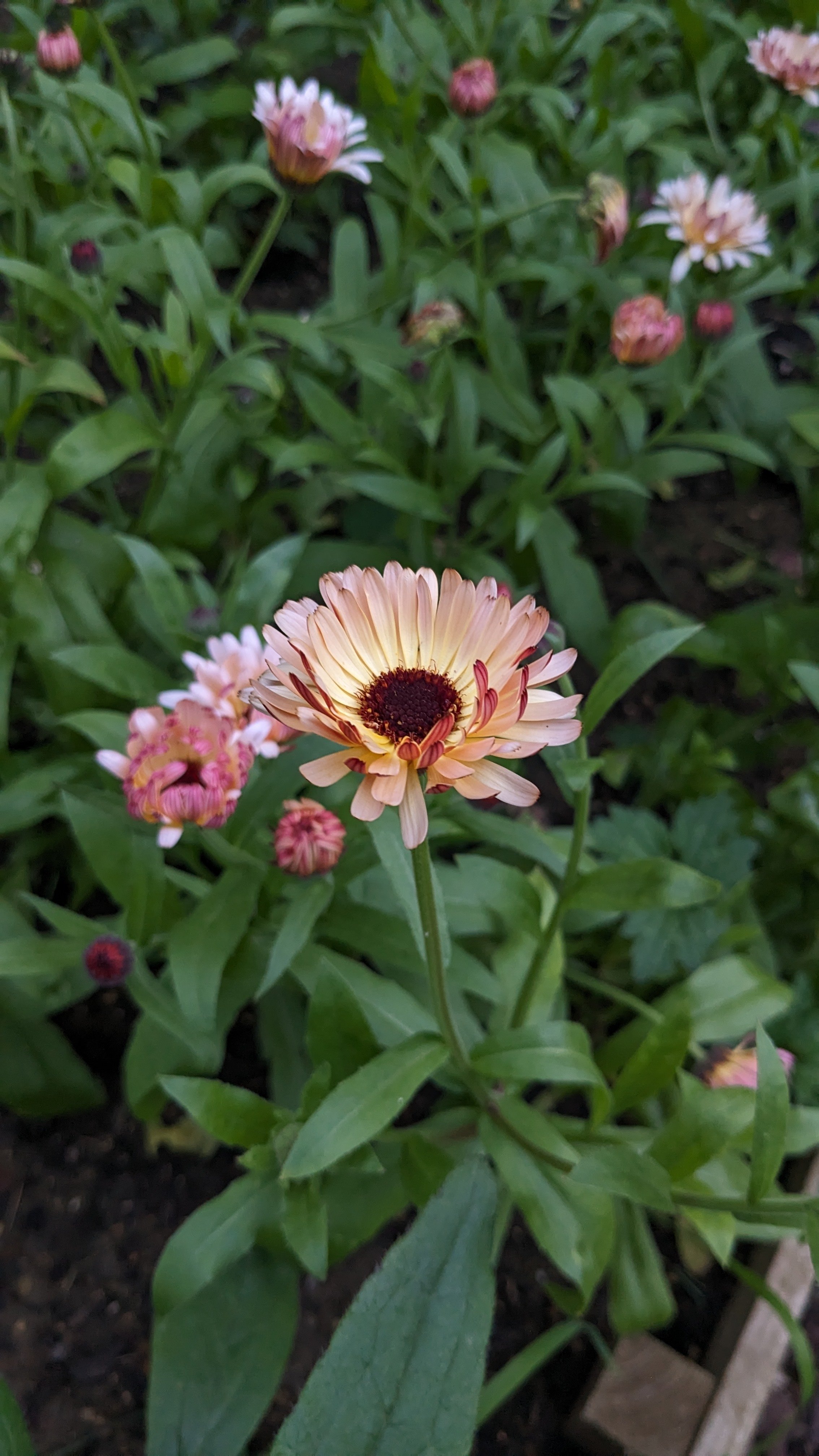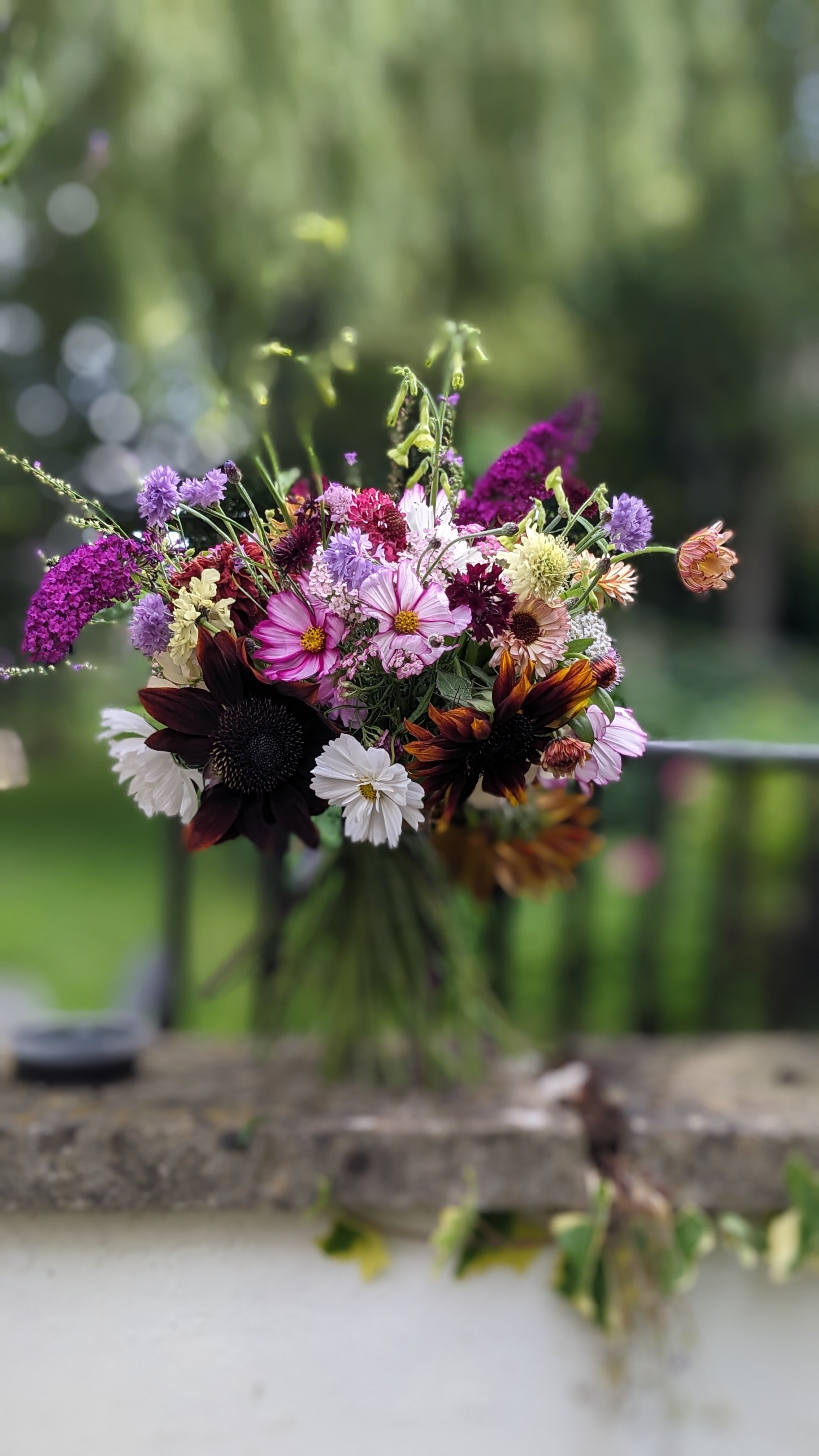A year in a cut flower garden
from garden to vase, what does it take to create an environmentally conscious cut flower yard?
and how do you turn a gardening hobby into a profitable business?
Lessons on life, gardening and motherhood from writer and micro flower farmer laura tweedale
Winter
The call comes as we finish the joyful celebrations of my daughter’s birthday: my cousin, aged 37, has lost her battle with Leukaemia. I sit on my old bed in my new house in the dark and weep. It is a grey, cold winter’s eve and the damp we inherited with this rural home takes on a sinister chill. This is not how life should be. The next day, as filtered light slowly curls over the horizon, my new garden begins to glow. Softly I see birds and squirrels break from their warm retreats, finding morsels laid out in the morning dawn. I am in awe of the weeping willow’s winter skeleton, its scale reminding me that, in comparison, I am so small in this big wide world. So small, but so angry and so heartbroken that the new year begins with such news. The complexity of emotions create an impetus for progression, a traction to do, not be, and embrace this one, precious life. The calendar turns and our new life in the country begins, and I seek to combine passion and purpose outside of my role as mother. My eyes settle with the garden. My thoughts of cut flowers set seed.
I am privileged to have been raised by gardeners. A garden or allotment have been part of my life since I was a child thanks to my family, but it wasn’t until I took on a garden of my own almost a decade ago that I fell head over heels in love with gardening. My previous garden was pretty small, was west facing with six foot high fences and, as time passed, became rather full of children’s play equipment. It evolved as I evolved. It grew and into every crevice, plants were packed. I relished it, falling in love with the storytelling a garden provides and how you can shape the narrative with your own experiences, not just the plants you choose. When my husband and I decided to leave suburbia and relocate to the rural Oxfordshire countryside, a slightly bigger garden was our priority. We were blessed with something even my dreams didn’t dare believe.
Ranunculus corms soaked then presprouted in the stone garage on 27 January. Moved to greenhouse 11 February. Above photograph: 10 March.
The new garden is roughly 60m (200ft) long and at the far end sits a wonky workshop, a dilapidated shed, a shattered greenhouse and a deep pile of rubble used for storing wood away from wet soil, logs bunkering under a tarpaulin. Three raised beds grow a plethora of weeds whilst a number of abandoned fruit trees cast spindly shadows across them. It is the most joyful place I have ever been.
By late January, as catkins twinkl on frosty mornings, I lay out every single cardboard box from our move to start the new cut flower beds. Hours are spent peeling back plastic packing tape leaving my fingers raw, but it is so satisfying to know no plastic is going to contaminate my cut flower yard. The weeds crunch, then squelch as they are pulled by hand; alliums, narcissi and tulips hurriedly planted in their wake. The bones of the cut flower yard begins to form but the garden needs a heartbeat - somewhere to feed and nurture it - so my priority turns to two actions: build the compost bins; repair the greenhouse.
At the start of February the rotten shed is taken down, salvageable pieces stashed away for future upcycling, and old shipping pallets are slowly hoarded from a local building site to erect into new composting bays. One beautifully bright morning not long after my son turned four, the bins are built as the children enjoy their new garden, our little dog pottering in their muddy footprints. The garden slopes away and so old wood from a gazebo is repurposed, along with some new timbers, to build frames for nine (nine!) beds. A local double glazing firm cuts new panes to size for the old, out of production greenhouse, and I source a new window frame and automatic roof vent from an online spares company. The garden jolts into life. At last, it is time to get sowing. A week later, disaster struck.
Ranunculus in bloom - 23 May. A lot of work for the wrong colour. A beauty, regardless.
Spring
The day after my cousin’s funeral, my beautiful, seven year old daughter has a terrible accident. She has seriously damaged her knee. Her surgery is quick, her NHS care impeccable, but the recovery slow and arresting. Six weeks in a straight leg brace progressing from a wheelchair to crutches to none. Six months, no sport. No running. No playtimes at her new school. I clear mud from the bottom of the crutches with toothpicks twice daily, slowly homeschooling her for a while, getting her outside when she isn’t too tired or in too much pain. By 10 March the first of the daffodils have broken their wintery slumber, the ranunculus corms I had pre-sprouted in the stone garage are transferred to the greenhouse, and I begin the seedling shuffle with my heated propogator indoors. As our family visits and supports my daughter, the first seeds are sown and my girl writes labels which travel from propagator, to window ledge, to greenhouse. Stocks sown on the 23 February are an inch tall by April 4th, sunflowers already leaning towards the light as their first true leaves appear less than three weeks from sowing. After weeks of dry days, snow arrives. I finish my planting plan - a meaty spreadsheet which includes timings, spacings, spread and height for each variety I plan to grow. I meet with florists and talk myself hoarse. More seeds are sown, then pricked out. This is where I escape from the intensity of mothering; this is where I am nothing more than me.
Tulip Black Parrot. Planted late - 5 January! Above photograph taken 11 May. Dry spring. Everything late to bloom this year.
By early May the parrot tulips have erupted, their frilly heads a true gardener’s delight. An echo of grief creeps in as I pull the beauties from the ground. I am reminded that beauty - and life - can be fleeting. I can’t quite bear to throw away the bulbs and let them languish in a trug in the greenhouse, ashamed over the desperate waste of it. This unexpected challenge I face with grey resolution; they were the price to pay when growing these flowers just for cutting. I sooth my guilt by remaining true to my organic-gardening principles. Satisfaction soon overtakes my reservations as I rip ivy from pathways, pull bindweed and ground elder and chickweed and more from the beds. Snails are tossed like cricket balls into the chicken run, fodder for the hens as headless slugs are left where they were decapitated by ancient scissors, sustenance for the toads and hedgehogs and song birds that use the garden each day.
The first failings came and with it the reminder that no one can control nature. Out of 180 corms, only 96 ranunculus make it into the ground despite more babying than a newborn. Then, not all flower and of those that did, less than 10% are the colour I had ordered. The compost delivery comes - the biggest financial investment from a dwindling bank account, and as I shovel soil from bulk bag to bed, I chid myself over my bad maths: I am half short (at least). I try the internet hack of part-filling beds with cut up old twigs, left to break down beneath the compost, only to discover it makes planting into an absolute nightmare, disturbing roots and toppling seedlings with every plunge of the trowel. Trays and trays of zinnias succumb to fungus after potting them on into a tainted bag of compost. Everything is late - so very late. The weather is against all British gardeners, it seems, but as a first-time cut flower farmer, it is hard not to be personally affronted. But the biggest failure of all comes when the first, majestic blooms are ready to cut, and no one wants to buy them. My pricing is off and my quantities too low to justify the now eye watering cost of fuel for delivery. Plus the carbon - measuring my carbon for offsetting. Keeping everything local helps and I avoid any single trips to suppliers, so far. Not enough. Pivot, they say.
Pivot, I did.
Summer
I had never intended to arrange the flowers I grew. I’m no florist, and the artform is a marvel that seems so very out of reach to me. I have snipped, squished and plonked things together for the kitchen table for a time, happily allowing the glow of pride that I grew these things to mask the amateur arranging. I remember the wonder when my own wedding flowers arrived some ten years earlier, the awe that these blooms could be so thoughtfully crafted taking my breath away. This could not be me. But not wanting the flowers I have cut and not sold go to waste, I allow myself a chance to play. (Do we do that enough in adulthood, I wonder?) I try not to take myself so seriously, researching the tips to get the very best from each bloom and leaning on my intuition as a gardener for colour and form. I cover an old table with one of my vintage, embroidered tablecloths, empty the children’s toys from a wire basket to stand some clean jam jars in, then make some small, hand-tied posies. I put them out for sale by the garden gate. I sell every one.
1 June and my daughter is free from her leg brace, my son now just months away from starting school. Goblet-sized poppies in startling crimson sing against the blues of geraniums and cornflowers and I arrang for our local church altar some simple bouquets in vases reminiscent of early summer meadows. The pastels of the roses and the peonies and the first cosmos finally make me feel like a flower farmer / florist. I cut, condition, clean, and repeat. Toes are often wet from washing out buckets and my dining table becomes a veritable haven for any insects shaken loose during arranging, later curtailed out the dining room window. (This cures my anxiety of spiders: they eat the aphids, afterall.) I contact a local eco shop and agree to start selling bunches with them. I take the children to school, car boot full of flowers, then head to the shop where I’d finish my weekly meal plan in the car park waiting for them to open, take in the flowers, then do my grocery shop. A rhythm begins to form.
On July 7 the first sunflower is cut - Helianthus ‘Claret’ - and its intense mahogany sets a depth to the palette that becomes a stalwart all summer long. Somehow my Rudbeckia Hirt ‘Sahara’ begins to bloom on a spectrum, from intense cherry to rich cinnamon, to copper-dashed peach, and coupled with the buff-apricot of Calendula ‘Sunset Buff’ and picotee carmine of Cosmos ‘Candy Stripe’, bouquets begin to sing. The more I practise arranging, the more I notice the importance of growing a diverse shape of flower - something not new to me as a sustainably-minded gardener, but new to me as a cut flower grower. The graceful arch of a barely open Buddleja needs softening by the delicate pillows of Scabious atropurpurea, whilst the dominating boldness of a Sunflower requires ethereal high-notes from Nicotiana Llangsdorffii, or grasses such as Panicum Elegans or Briza Maxima. Suddenly bouquets dance and the late summer light makes them shine for the jewels that they are. I wish they could last forever. But nothing does. We bury our dog in a casket of flowers beneath the willow. Goodbyes are whispered. Endless tears shed. Season’s come, season’s go.
Autumn
September rolls in with the subservient acceptance of change. My son is going to school. No longer are our days our own and my years of mothering babies becomes very firmly over. I had prepared for this, mourning the time passing as I think only a parent can do, but when September begins it is the garden I mourn for most. My son is so very ready for more than I can provide, and I am so very ready to start doing a little more for myself. I had fought fire for six weeks as the children holidayed and I cut flowers, squeezing in arranging where I could between looking after the children and renovating our house. I would work late into the night, cutting at dawn and remaining thankful for the coolness of the garage on the less than tepid summer days this year. My daughter is discharged from the hospital, six months of physiotherapy over, my tentativeness over her agility remaining. But the garden is fading. Finally I have time to dedicate to the space just as the flowers fade and the days run short. It feels cruel, but invigorating. Next year will come before I know it and I fall for a marketing ploy and buy up seeds of biennials - Foxgloves, Hesperis, Dianthus and Lunaria - all new to me as a grower, but not of a childhood spent in gardens. As the cosmos falls, the beds are turned over, narcissi and alliums and tulips tucked in, no ground left empty for the new winter ahead. A new season approaches. How lucky I have been.
5 September - still an abundance. Days shortening fast. Early biennials ready in the greenhouse to fill the annual void soon.
As I write these final words in late November, I can not help but smile. Today is my 38th birthday. I am expected, I think, to be ‘a grown up’ by now: to know myself and how to be, to have found success and self worth and achievement from what I do, except, I struggle. I leant on being a stay-at-home mother for a long time, my writing and flowers being a side-hustle to my main role as caregiver, always second to little people, always squeezed in alongside the guilt of finding a job I love that hasn’t been that profitable (yet). Whilst my children were at home, I could justify it. Now, I can not. Now is the time for a little more.
Reading my diary and looking back through the hundreds of photographs I took from this first season of growing cut flowers for sale has been cathartic: cathartic in a way only birthdays and new year’s eves can be where you wonder about times past and futures yet to be. I realise that I did achieve something. Despite the challenges and bereavement, I nurtured and mothered hundreds of plants from the ground, as I nurtured and mothered my children. I brought joy to others with their ‘grown-not-flown’ bouquets, and provided sustenance and a haven for the wildlife around my home. I did it without chemicals that would damage the earth, and no single use plastic. I made new connections and ‘put myself out there’ in a way I never imagined I could. I grew with those flowers. I stayed true to my values. I invested in my skills and education through practise and that is invaluable. I don’t know what will come next but I feel ready. If nothing more, this year gave me a place to start the next chapter of my life.
Stocks sown 23 February. Above photograph taken 4 April. First stocks harvested 12 June.
For more information on the varieties of flowers I grew, please leave a question or comment below and I will happily share with you what I grew and where I ordered seeds from too, if this is helpful. Thank you for reading my story. I hope it inspires you too.
Before you go…
Did you enjoy this article?
My writing here is always free to read. If you’d like to support my stories and help me with the costs in running the website and generating its content, you can buy me a coffee. x




